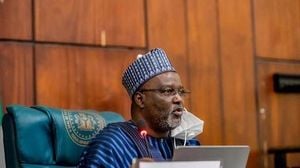Washington’s latest move to extend sanctions on Russia has sent ripples through the global economy, reshaping oil flows, intensifying the BRICS bloc’s economic strategies, and sparking a fresh round of debate about the fading dominance of the United States on the world stage. As November 2025 draws to a close, the effects of these policies are being felt from New Delhi to New York, with energy markets, gold reserves, and the very architecture of international finance all in flux.
For India, China, and Brazil—three of the largest BRICS economies—the new U.S. restrictions on Russian crude have forced a strategic pivot. According to recent reports, India’s state refiners are now turning to American companies for fresh procurement deals, as access to Russian barrels becomes increasingly limited. This shift is not just about finding new suppliers; it’s about managing risk in a world where old alliances are fraying and new ones are being forged out of necessity.
Igor Sechin, CEO of Russia’s Rosneft, has been vocal in his criticism of Washington’s approach. He argues that the pressure campaign could destabilize Western economies more than its intended targets. Sechin points to a key trend: while BRICS economies continue to expand, U.S. growth is showing signs of slowing. “Sanctioning a group that accounts for more than 42% of global oil output could amplify vulnerabilities in Western economies already dealing with tightening supply and rising geopolitical tension,” he warned, as cited by multiple outlets.
Sechin’s concerns are echoed by others watching the global energy landscape. Chronic underinvestment in Western energy markets has led to a sharp decline in exploration budgets. Over the past five years, reserve replacement at major Western oil companies has lagged, reaching only about 40%. This leaves Western economies increasingly exposed to supply shocks—especially as BRICS nations wield more influence over global output. According to the Bureau of Labor Statistics, the Producer Price Index climbed 0.3% in September 2025, a sign that inflationary pressures are still simmering beneath the surface.
The ripple effects aren’t limited to oil. In the world of currency and reserves, BRICS countries are making bold moves to reduce their dependence on the U.S. dollar. A major BRICS member is now preparing new foreign-exchange operations centered on the Chinese yuan—a clear signal that the bloc is intent on charting its own financial course. This push for de-dollarization has drawn sharp criticism from former President Donald Trump, who has repeatedly warned BRICS leaders that pursuing alternative payment systems could trigger retaliatory tariffs. “Countries supporting BRICS currency initiatives or alternative payment mechanisms could face tariffs of 10% or even 100%,” Trump has threatened, according to statements captured by Business Today.
Noted economist Jeffrey Sachs, speaking at the 2025 UNISA Founders’ Lecture, painted a stark picture of America’s waning influence. “The U.S. is a fading power as BRICS nations expand their global influence,” Sachs said. He acknowledged that Washington still wields considerable power—especially through its military and control over international payment systems—but argued that this dominance is eroding. “It’s only two blocks from the president’s office to tell the IMF what to do. You don’t even need to text it. It takes 30 seconds to walk across the street to say, veto that country’s program. And that’s still power,” Sachs remarked, describing the close physical proximity of the White House, Treasury, World Bank, and IMF in Washington, D.C.
Sachs also highlighted the growing self-confidence among BRICS leaders. He recalled Brazilian President Lula’s response to U.S. tariffs: “We don’t need an emperor and we’re not going to succumb to this kind of pressure.” With 10 BRICS countries now representing 46% of the world’s population and 41% of global GDP, Sachs argued that the balance of power is shifting. “The U.S. is isolating itself. It doesn’t even go to the parties anymore. It puts on tariffs. It says, ‘You can’t have our market.’ And the rest of the world says, ‘Okay, because your market’s not so important for us.’”
The gold market offers another window into these shifting dynamics. Central banks, particularly in BRICS countries, are buying large volumes of gold, reducing market supply and supporting stronger price levels. Annual official BRICS gold purchases have held above 1,000 tonnes in recent years, with one quarterly period in 2025 alone showing gains of about 166 tonnes. In November 2025, BRICS countries purchased around 20 tonnes of gold, further tightening supply and boosting the metal’s role as a core reserve asset. In India, gold now accounts for over $100 billion of reserve value—a testament to its renewed importance.
This surge in official buying is not about short-term speculation; it’s a deliberate strategy to build long-term financial independence and protection from currency volatility. As central banks add gold to their reserves, the metal leaves the open market permanently, reducing liquidity and making prices more sensitive to demand shocks. “Reduced liquidity often leads to stronger price reactions, as smaller moves in demand trigger larger market responses,” observed analysts at InvestingHaven. For investors, tracking official purchase data, gold market trends, and updates from organizations like the IMF and World Gold Council has never been more important.
The challenges facing the U.S. are not limited to geopolitics and commodities. Domestically, warning lights are flashing. Moody’s recently downgraded the country’s long-standing AAA credit rating to AA1, stripping the U.S. of its last top-tier status. The national debt now stands at a staggering $35 trillion, prompting financial experts like Bridgewater’s Ray Dalio and Rich Dad Poor Dad author Robert Kiyosaki to voice grave concerns. “The U.S.’s escalating national debt is a serious risk,” Kiyosaki warned, highlighting the potential for severe global repercussions if the imbalance between debt supply and demand continues unchecked.
Meanwhile, the cryptocurrency sector is experiencing its own upheaval. U.S.-based startups captured 46% of global venture capital funding in the last quarter of 2024, and a Bitcoin treasury and mining company linked to the Trump family recently added over 1,400 Bitcoin to its holdings. Congress is set to focus on cryptocurrency legislation in 2025, with particular attention on stablecoins and the FIT21 Act. At the same time, a measure opposing the creation of a U.S. central bank digital currency (CBDC) has been added to the National Defense Authorization Act, reflecting deepening divisions over the future of money.
Yet, even as some analysts warn of a looming recession—pointing to key economic indicators and slowing growth—others note that the U.S. economy, despite its troubles, remains relatively strong. U.S. Treasury Secretary Scott Bessent recently confirmed a major policy shift: blockchain technologies will play a central role in the future of American payments, with the U.S. dollar officially moving “onchain.” On July 18, 2025, Ethereum ETFs in the U.S. recorded a combined net inflow of $402.5 million, signaling robust institutional demand for digital assets.
As global alliances realign and financial strategies evolve, the world is watching to see whether the U.S. can adapt to these new realities or whether it will continue to retreat behind tariffs and sanctions. For now, the balance of power is tilting—and the consequences are being felt in markets, boardrooms, and central banks across the globe.





